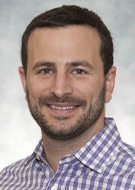New Articles Reveal COVID-19 Impact on Radiology
Radiology practices may see a 50-70% decrease in volume over the coming months




New articles published in Radiology and Radiology: Imaging Cancer shine a light on the effects of COVID-19 on radiology practice and research throughout the United States and reveal that outpatient facilities will be hardest hit.
The COVID-19 pandemic has already had a profound impact on U.S. radiology practices. Measures adopted to slow the transmission of disease and expand crisis capacity are decreasing the demand for imaging independent of COVID-19.
“At a time of unprecedented public health and economic crisis, radiologists have never experienced so much uncertainty. We attempt to lay out the background and the path forward,” said Howard P. Forman, MD, MBA, from Yale School of Management and lead author of the special report, “The Economic Impact of the COVID-19 Pandemic on Radiology Practices.”
While economic recessions generally tend to result in decreased health care expenditures, radiology groups have never experienced an economic shock that is simultaneously exacerbated by the need to restrict the availability of imaging.
“Radiologists are facing an economic crisis with a severity and length that few could have imagined,” said report co-author Joseph J. Cavallo, MD, from Yale School of Management. “Practices will need to make short term sacrifices to ensure solvency, stay agile enough to handle a quickly changing and uncertain fiscal environment, and be prepared for potentially permanent changes to the field moving forward.”
Outpatient heavy practices will feel the biggest impact of these changes, but imaging volumes will decrease across the board. Anecdotal experience suggests that radiology practices should anticipate 50-70% decreases in imaging volume that could last anywhere from two to four months, depending on the location of practice and the severity of the COVID-19 pandemic in each region.
Anticipated Downturn in Cancer Screening and Other Imaging Exams
Cancer imaging has also been affected, and the necessary delay or rescheduling of cancer imaging procedures due to COVID-19 is expected to create a surge down the road that will tax the capacities of scanner time and medical personnel. However, there may be downturns in cancer screening and other non-emergency imaging exams due to loss of health insurance among the newly unemployed, as well as lingering fears about visiting hospitals and other medical facilities post-pandemic.
“We present challenges the cancer imaging community must overcome to restore clinical and research operations,” said Gary D. Luker, MD, from Michigan Medicine, University of Michigan, Editor of Radiology: Imaging Cancer and lead author of “Transitioning to a New Normal after COVID-19: Preparing to Get Back on Track for Cancer Imaging.”
Research Productivity, Funding and Scientific Progress Impacted
It is too early to predict the pandemic’s long-term implications for radiology practices. In the near term, practices should expect significant non-permanent cuts in revenue. They should evaluate their overhead expenses and devise strategies to reduce these on a semi-permanent basis. They will want the ability to quickly restore or exceed baseline capacity once the pandemic subsides. Minimizing disruption to staffing in the short term will be crucial to that end.
The effects of the pandemic on radiology research are already visible, as U.S. universities have severely curtailed research activities since the pandemic exploded in March. If not specifically addressed, the current disruption of imaging research will have adverse ramifications for productivity, funding and scientific progress once the pandemic subsides and well into the future. A shutdown of three to four months may result in one to two years of lost scientific productivity.
“The COVID-19 pandemic has disrupted research at all levels, and our manuscript highlights some of the experiences from academic medical centers while shutting down imaging research. More importantly, we also discuss the short term and long-term ramifications. These include funding challenges, hiring and retention of research personnel and impact on careers,” said Achala Vagal, MD, MS, from the University of Cincinnati Medical Center and lead author of “The Impact of the COVID-19 Pandemic on the Radiology Research Enterprise: Radiology Scientific Expert Panel.”
Radiology research funding will be a major challenge. Departmental and institutional budgets will undoubtedly be constrained in the wake of the pandemic. This may lead to significant retrenching of research expenditures in radiology departments.
“This is unchartered territory for all of us,” Dr. Vagal said. “Our imaging scientific community will have to brace for the future, strategize and rethink what research will look like in the post-COVID era.”
The final extent of the COVID-19 pandemic on radiology is impossible to know at this early stage. Administrators and practice leaders need to be proactive with practice modifications and financial maneuvers that can position them to emerge from this pandemic in the most viable economic position, while academic institutions need to rethink their approach to research funding, staffing and processes.
RSNA is committed to connecting radiologists and the radiology community to the most timely and useful COVID-19 information and resources. RSNA’s COVID-19 Resources page houses the latest guidance, original research, image collection and more. The page will be updated on an ongoing basis.
Watch RSNA News print and online for upcoming feature stories on these articles.
For More Information
Access the Radiology report, “The Economic Impact of the COVID-19 Pandemic on Radiology Practices.”
Access the Radiology: Imaging Cancer article, “Transitioning to a New Normal after COVID-19: Preparing to Get Back on Track for Cancer Imaging.”
Access the Radiology article, “The Impact of the COVID-19 Pandemic on the Radiology Research Enterprise: Radiology Scientific Expert Panel.”